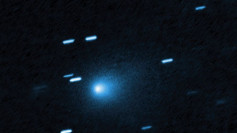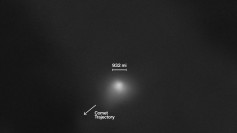Elon Musk's xAI has launched the colossal "Colossus" supercomputer, a new benchmark in AI training technology. Announced on Monday, Colossus features an unprecedented assembly of 100,000 Nvidia GPUs, making it the largest AI training system in existence, with plans to double its capacity in the coming months.
The supercomputer, which Musk claims is the most powerful of its kind globally, was brought online in just 122 days-a rapid turnaround that highlights the intense competition within the AI industry to push the boundaries of technological capabilities. Built in Memphis, Tennessee, Colossus represents a substantial financial investment, with the Nvidia H100 GPUs alone estimated to cost around $3 billion. Each GPU, priced at approximately $30,000, is a critical component for training advanced AI models.
Musk's tweet announcing the completion of Colossus also hinted at future expansions. "From start to finish, it was done in 122 days," Musk wrote, adding that the facility will "double in size to 200k" GPUs when an additional 50,000 Nvidia H200 GPUs are integrated. These newer GPUs are designed with enhanced memory and processing power, promising even greater computational abilities.
The Colossus supercomputer will serve xAI, Musk's latest venture, which focuses on developing cutting-edge generative AI technologies. Among its projects is Grok, a controversial chatbot known for its pro-free speech stance. By utilizing the massive computational power of Colossus, xAI aims to accelerate the training of Grok and other AI initiatives, potentially unlocking new functionalities and improvements.
Despite the impressive feat, Colossus's launch has not been without controversy. Local environmental groups have raised concerns about the potential impact of the supercomputer on Memphis's infrastructure, including its electricity grid and water supply. There have also been calls to investigate the environmental effects of the facility's cooling turbines. However, city officials have indicated that xAI is committed to mitigating these concerns and supporting local infrastructure improvements.
The scale of Colossus surpasses other major AI clusters, including those operated by Google and OpenAI. Google's system utilizes 90,000 GPUs, while OpenAI's setup employs 80,000 GPUs. With Colossus, xAI has set a new benchmark, although the AI arms race is far from over. Companies like Meta, Microsoft, and OpenAI are also investing heavily in GPU technology to advance their own AI capabilities.
The choice of Nvidia's H100 GPUs for the initial deployment, with plans to upgrade to the H200 model, underscores the high stakes in the AI industry. The H200 GPUs are renowned for their advanced specifications, including 141 GB of HBM3E memory and 4.8 TB/sec of bandwidth. Nvidia's latest Blackwell chip, unveiled in March 2024, offers even higher performance metrics, though the H200 remains a key player in the current AI landscape.
Nvidia has responded positively to the unveiling of Colossus, praising xAI's achievement and noting the system's potential for significant advancements in energy efficiency. The company's endorsement highlights the broader implications of Colossus for the future of AI technology and research.
As xAI's Colossus enters the spotlight, the conversation around AI technology's accessibility and its concentration among a few major players will likely intensify. The deployment of such powerful systems by well-funded entities poses questions about the broader implications for smaller organizations and researchers.



